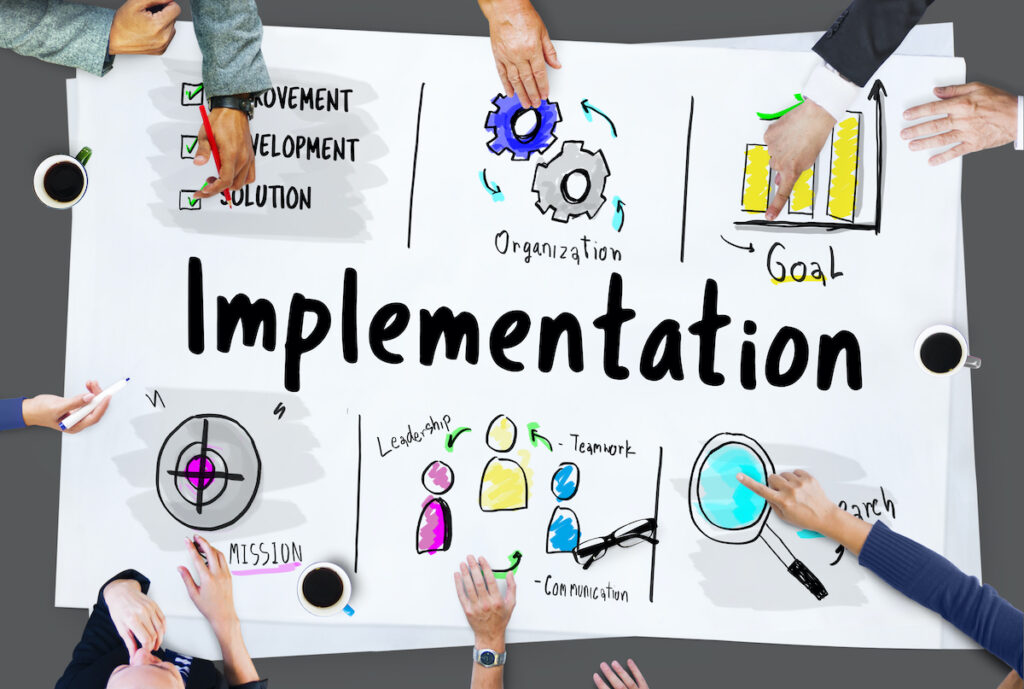
In the field of mental health care, the experiences of ethnic minority communities contrast sharply with those of their white British counterparts. The field of mental health is supposed to be a sanctuary of support, but inequalities persist, making it seem less reliable.
Let’s consider this disturbing truth: in the UK, people from ethnic minority groups are more likely to be detained under the Mental Health Act for restrictive interventions (Koodun et al., 2021). What is even more frightening is that restrictive practices are often dominated by a single cultural framework and lack a holistic approach (Bansal et al., 2022). The aftermath of COVID-19 has further strained the mental health care system’s effectiveness for minorities, yet a growing number of people passionately advocate for change, fostering a broader public understanding of mental health reforms.
In the search of impactful change, Winsper et al., (2023) used experience-based codesign (EBCD), a methodology for developing prioritised actions based on the experiences of stakeholders in different study sites. The process goes beyond recognising what the problem is and developing workable solutions that resonate across settings to create a mental health care system that truly serves everyone.

Access to mental health services and support varies for minoritised and ethnically diverse communities in the UK.
Methods
Winsper et al., (2023) implemented experience-based codesign in four areas: Coventry and Warwickshire, Greater Manchester, East London and Sheffield. Three types of participants were recruited including service users, carers, and health professionals. NHS mental health trusts cover these four areas and they also reflect the diversity of England (including urban/rural, rich/poor, ethnically diverse).
Between July 2021 and July 2022, the study analysed data using an interpretivist-constructivist approach to accomplish four objectives:
- Objective 1: Service users (n=29), carers (n=9), and health professionals (n=33) participated in interviews regarding opinions about local priority actions.
- Objective 2: Service users (n=15), carers (n=8), and health professionals (n=24) formed focus groups (FG) to list and vote on important local priority actions.
- Objective 3 and Objective 4: Service users (n=15), carers (n=5) and health professionals (n=21) formed (local and national) codesign workshops to select top priorities and develop detailed plans for each locality and the nation separately in different meetings and a large conference.
Results
The results of the study can be matched to the four objectives mentioned above and are as follows:
Stakeholders’ view on (local) priority actions
The researchers found five priority action themes that were common to all areas:
1. Greater involvement of lived experience
Mental health professionals acknowledge the lag in incorporating service users’ perspectives into service development.
…If people were to understand…They’d be more understanding.
– Service User
2. Increasing staff diversity across all roles
This action includes the diversification of leadership roles, as stakeholders believe that representation cannot be achieved if it lacks ethnic and cultural diversity.
3. Training to increase awareness and knowledge of ethnicity and cultures
Stakeholders highlighted the need for specialised training to deepen ethnic and cultural awareness, challenging the perceived superficiality of current generic NHS training.
4. Enabling open discussions about racism, ethnicity and culture
This remains a challenge, with both service users and professionals citing discomfort and barriers.
5. Reducing preconceptions, prejudices and discriminatory actions
This action was considered vital, urging against stereotypes and acknowledging the ongoing fight for anti-racist practices in healthcare.
Stakeholders’ top five local priority actions
The Objective 2 process (see methods above) highlighted the common actions mentioned in Objective 1: increasing staff diversity, engaging people with lived experience and community groups, cultural training, community outreach to reduce stigma, and early education about mental health in schools.
The Lived Experience Advisory Panel (LEAP) pinpointed four key focuses: enhancing peer support, diversifying faculty and staff, promoting lived experience involvement, and encouraging open discussions on racism and culture. Simultaneously, it stressed addressing racism, refining recruitment, providing support, and authentically addressing sensitive topics as crucial.
Implementing plans for local priority actions
To develop the local implementation plan, three themes were highlighted: community outreach and collaboration, diversifying mental health care using culturally appropriate approaches and facilitating open discussions about race, culture, and racism in safe spaces.
Specific initiatives included educational activities, non-pharmacological peer-led therapy, enhancing staff diversity, and a vision for the NHS to work with community groups.
Implementing plans for national priority actions
Participants urged a radical approach, stressing the need to address major issues to achieve systemic change. There was an agreement to coordinate existing organisations and agencies and also to recognise the centrality of service users and communities in service design.

Stakeholders highlighted priority actions to improve access to services for ethnically minoritised individuals, such as service user involvement and open reflective spaces for discussions on race and culture.
Conclusions
Overall, service users, carers, and health professionals agreed that mental health care is currently inequitable for ethnic minority groups, while also proposing contextualised actions and strategies to reduce inequity. Community outreach has a crucial role to play in this and requires the establishment of an authentic and meaningful collaboration between ethnic minority groups and NHS services. Moreover, diversification of mental healthcare involves increasing staff diversity and providing culturally sensitive treatment. Lastly, the importance of effective communication on racism and ethnicity, with addressing leadership inequalities through monitoring and anti-racism policies. Ultimately, inequalities need to be addressed at a systemic level with local communities being at the heart of those initiatives nationally.

Systemic changes and initiatives are required to instigate increased engagement with services from different communities.
Strengths and limitations
This study has some noticeable methodological strengths. The authors used a multisite design, which examines the experiences of people holding different roles within geographical areas, responding to mental health priorities in diverse localities with diverse needs. This design contributes to a more holistic picture of access to care and builds on ideas that could have wider applicability beyond area specificity. Furthermore, the EBCD methodology engages stakeholders and incorporates lived experience. This approach allows people’s stories to be listened to and centred in the process, while also helping to shape the research and continuous service improvement objectives (Healthcare Improvement Scotland, 2020). This extends the qualitative depth of the research.
However, there is no study without its limitations, and some should be highlighted. Despite the researchers’ best efforts to recruit ethnically diverse participants, most participants were of Black or South Asian descent, and there is still doubt as to whether the results can be generalised to other ethnic backgrounds. In addition, the participants were also all English speakers. Holding in mind that language is an important factor, and often can be one of the main barriers to access services among ethnically minoritised individuals, it poses further questions about the findings here. What is the role of language in mental health services? Is this something that needs further attention? How can ethnically diverse populations increase their awareness of mental health support, especially in cases where language may fail them? Therefore, opening up the study to people who are not fluent in English may have added more nuance to the priorities in action. Moreover, the study was limited in terms of professional diversity, with white British health professionals recruited for some of the focus groups and workshops, which may reflect wider issues in senior occupations across the NHS.
The recruitment focused mainly on urban areas, which raises questions about the applicability of the findings to rural areas. Would the same ideas apply for populations in less dense neighbourhoods or localities with limited availability of mental health services? Lastly, the impact of the COVID-19 pandemic on services was briefly mentioned, but was not examined in-depth. Could this provide directions for further research on priority actions under extreme events such as disasters, wars, or epidemics?
Some aspects of the study have a dual character limiting the methodological rigour in some ways, whilst also strengthening it in other ways. For example, most of the interviews were conducted virtually, which may have compromised trust building, but at the same time provided engagement and convenience for both researchers and participants. The authors consider common priority actions, which in turn can be implemented as local priority actions. However, different priority actions in different sites that have participated in this study have not been given much attention, and they may also be informative for local strategies.

Participants were recruited from four different localities, but the fluency in English pose questions about potentially excluded ethnically minoritised populations not fluent in English.
Implications for practice
The findings of this study act as valuable insights for mental health practitioners, policymakers, and organisations. In my opinion, what the authors have achieved is to speak of the importance of cultural competence, cultural inclusiveness, and community engagement when thinking about improving access to services. Cultural competence is about understanding one’s own cultural beliefs and values and how they differ from other cultures (National Technical Assistance and Evaluation Centre for Systems of Care, 2009), which is particularly important when working cross-culturally with service users. If clinicians are culturally competent, it is less difficult to develop cultural inclusiveness.
It was important to be aware of my own cultural lenses when critically appraising this study. I come from a traditional Asian family, where there would be strict seniority rules in the family. I have been involved in family counselling and the expectations did not match the cultural background. For example, professionals would expected us to participate in therapy as equals, however, this is not in line with my cultural background. Therefore, counselling was not as effective as it could have been. Mental health professionals need to have a nuanced understanding of the challenges faced by individuals from different ethnic backgrounds, and culturally specific training programmes are imperative. This requires a commitment to continuous learning and cultural sensitivity.
Inclusive recruitment strategies are also an important influencing factor. Mental health organisations must proactively seek out professionals from different ethnic backgrounds for leadership roles to reflect the diversity of their service users. By doing so, organisations can create an inclusive environment that not only meets the specific needs of diverse communities but also challenges existing biases within the mental health care workforce. In addition to adjustments within mental health organisations, there should be collaboration between professionals and the community, resulting in initiatives to reduce stigma, raise awareness and provide accessible resources.
At the same time, flexible service delivery models should be adopted to meet the diverse needs of ethnic minority communities. This includes adapting treatments, language services and accessibility options to ensure that mental health care is responsive and inclusive. By tailoring services to the specific needs of each community, mental health organisations can increase engagement and improve overall outcomes.

Mental health practitioners need to show curiosity when working cross-culturally and increase their awareness of the challenges minoritised individuals may face when engaging with services.
King’s MSc in Mental Health Studies
This blog has been written by a student on the Mental Health Studies MSc at King’s College London. A full list of blogs by King’s MSc students from can be found here, and you can follow the Mental Health Studies MSc team on Twitter.
We regularly publish blogs written by individual students or groups of students studying at universities that subscribe to the National Elf Service. Contact us if you’d like to find out more about how this could work for your university.
Links
Primary Paper
Winsper, C., Bhattacharya, R., Bhui, K., Currie, G., Edge, D., Ellard, D. R., Franklin, D., Gill, P. S., Gilbert, S., Miller, R., Motala, Z., Pinfold, V., Sandhu, H., Singh, S. P., Weich, S., & Giacco, D. (2023). Improving mental healthcare access and experience for people from minority ethnic groups: An England-wide multisite experience-based codesign (EBCD) study. BMJ Ment Health, 26(1). doi: 10.1136/bmjment-2023-300709
Other References
Bansal, N., Karlsen, S., Sashidharan, S. P., Cohen, R., Chew-Graham, C. A., & Malpass, A. (2022). Understanding ethnic inequalities in mental healthcare in the UK: A meta-ethnography. PLOS Medicine, 19(12), e1004139. Available at: https://doi.org/10.1371/journal.pmed.1004139
Koodun, S., Dudhia, R., Abifarin, B., & Greenhalgh, N. (2021, October 6). Racial and ethnic disparities in mental health care. The Pharmaceutical Journal. Available at: https://pharmaceutical-journal.com/article/research/racial-and-ethnic-disparities-in-mental-health-care
Learning from the experience-based co-design demonstrator sites evidence and evaluation for improvement team. (2020). In Healthcare Improvement Scotland. Available at: https://ihub.scot/media/8306/20200214-ebcd-evaluation-summary-report-v10.pdf
National Technical Assistance and Evaluation Center for Systems of Care. (2009). Defining Cultural Competency. Www.childwelfare.gov.
